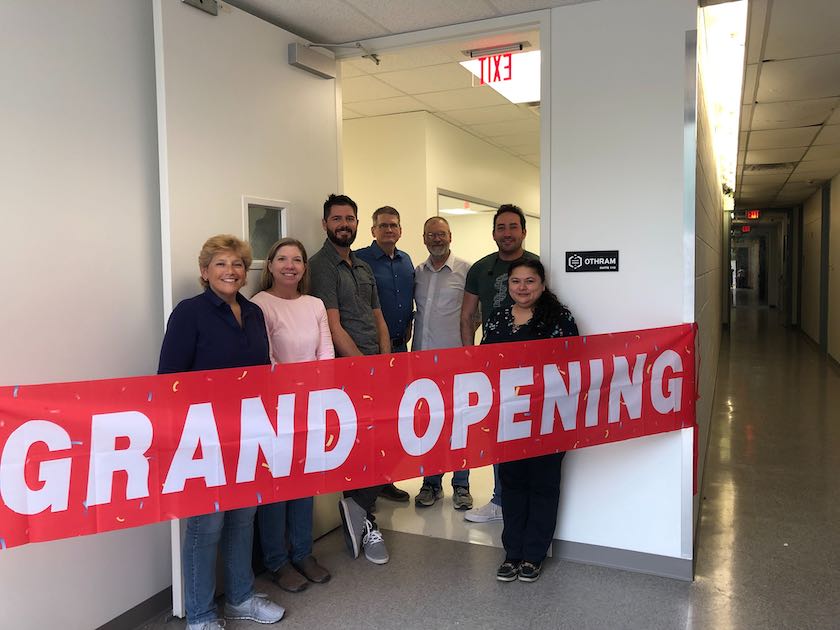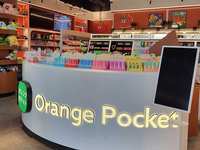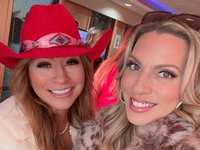- Sections :
- Crime & Public Safety
- Restaurants & Food
- Sports
- More
Not Science Fiction: Othram Applies Modern DNA Sequencing and Genomics to Forensics

THE WOODLANDS, TX -- It’s a black building with no windows and a limited number of doors for entry. Keycards grant access not only to the building but to the labs and other rooms once you’re inside. The hallways are quiet, and two large glass windows allow you to peer first-hand into the lab. In the first lab you’ll see machines that can detect how degraded DNA is, how much human DNA is in a sample, and then machines that can decode a single genome or an entire community’s. Those working in the labs are wearing shoe and hair covers, face masks and white lab coats. Sterilization is key; everything down to the ventilation and ceiling tiles are designed to create the most sterile and conducive lab for genome sequencing.
It seems like a place pulled straight from a science fiction movie, but it’s not. It’s Othram, and this custom facility is tucked right behind The Kitchen off New Trails Drive here in The Woodlands.
What they do
David Mittelman greeted me at the door of the ominous, sci-fi looking building with a big smile. Sporting jeans and a T-shirt, I half expected him to be wearing a traditional white lab coat. Mittelman has a Ph.D. in Molecular Biophysics from Baylor College of Medicine, and he completed his postdoctoral training at Baylor’s Human Genome Sequencing Center. He’s taught both at Baylor College of Medicine and Virginia Tech. Before co-founding Othram, he co-founded Arpeggi, Inc., a genomics startup later purchased by Gene by Gene.
“I’ve been in genomics my whole working life, starting with the Human Genome Project,” Mittelman said. “I’ve always loved genomics. I’ve worked on the medical side of genomics and I sold my first genomics company to Family Tree DNA, which is a consumer testing company. I enjoyed all of that, but this time I wanted to apply genomics technology to a problem I found more interesting and impactful.”
That problem is the Combined DNA Index System (CODIS), which is the system used by the FBI for criminal justice DNA databases. There’s a hole in the system though; only about 20 DNA markers are used to uniquely match a person to a crime scene.
“[But I asked], ‘What if we got all the DNA and learned everything?’ Because if you’re not in the FBI database, then you won’t find a match,” Mittelman said. “So the only way you can find someone is if you’ve already found them before. It’s a good system for confirming identity but its not great for finding someone. My team and I proposed this far out idea of grabbing all the DNA.”
Othram is that “far out” idea come to life. In the labs they examine evidence from local law enforcement to extract DNA and help solve cold cases, Jane and John Doe cases and sexual assault cases. It’s a humanitarian effort taking place within the seclusion of the facility, where some of the greatest minds in molecular biology, genetics, and bioinformatics are making a difference. Joining Mittelman is Dr. John “Trey” Fondon, another Woodlands native, who is a genomics expert and runs the Othram laboratory. Together they have built a team of laboratory and software talent that are drawn to solving the toughest cold cases.
The process
Mittelman is drawn to the cases where Othram can use DNA to help in sexual misconduct cases, such as rape, and to assist in unidentified persons cases. He’s even partnered with a non-profit, DNA Doe Project, providing a genome sequencing product that helps to identify some of the Jane and John Does.
“My proposition is, let’s go dig a little deeper in the DNA and see if we can learn something else,” Mittelman said. If Othram can get enough DNA, they can help investigators move otherwise stalled, or even closed, cases forward.
The process begins with the Othram online system where a request can be made for analysis on a sample to help with a case. The lab director, Dr. Fondon, and his team, then take a look at the case files, analysis from other labs and anything else provided to see if their genome sequencing can help.
“Not everything that has DNA can be sequenced,” Mittelman said.
If they can handle the case, they approve the request and wait for the materials. The DNA heads to the lab where it is carefully managed and assessed.
The next step is profiling the DNA. This is where they determine if the DNA is low quantity, if it has been contaminated with bacteria or other non-human sources, and if the DNA is degraded.
“We have a lot of solutions for those problems,” Mittelman said. “But to figure out what to do with it we have to figure out what condition the DNA is in. In some of these cases the DNA is decades old.”
Once the profile is done, they can present the assessment and see how the client wants to continue forward.
The next step is sequencing. This is where “giant gobs” of data are obtained from the DNA sample obtained. This produces sequenced fragments of DNA that can then be mapped back to the human genome. They take the fragments and map them back to the genome.
“Imagine you’re putting a puzzle together, except this is a linear puzzle,” Mittelman said. “Once you’ve done that, you can then ask, ‘Where does your sequence differ from the typical sequence?’ Now, instead of having giant gobs of data, you’ve reduced it to ‘What makes me look different from someone else?’”
This is when they start looking at things like ancestry. Othram also uses polygenic scores along with the genome sequencing to help predict traits like a person’s height or eye color. The profiles are then uploaded into public databases to find relatives of unidentified persons. And that’s where the investigators take over.
There are applications for this technology in other areas too, such as disasters.
“If you have all the genome, or even just a chunk of it, at your disposal, there’s just a lot more power.”
Bringing the vision to life
Othram is still in its infancy as a company. Launched just last year, it took a complete building renovation and raising funds to bring the vision to life. With an attention to every last detail, Mittelman doesn’t cut corners. He even waited for the opportune moment to announce publicly what the company was doing, presenting Othram center stage at SXSW’s “Digitizing Biology Through Genomics' session. At the session there was a Barracuda Bowl, a startup pitch competition, sponsored by Illumina Accelerator.
Hanging in one of the office spaces at Othram is the giant check they received for winning the competition.
“I wanted to build the best possible lab and start with technology I knew would be leading,” Mittelman said. “The best technology gets funneled to medicine, which is not a bad thing, but I want to see that technology go elsewhere as well.”
His team is recruited by him and they are some of the greatest minds in genetics. He told his team, “Let’s go solve this problem. I think this is an underserved area.”
Othram works with local law enforcement, private labs, military, non-profits, and medical examiners. And this is just the beginning. Mittelman doesn’t like to look too much into the future, but he knows this is just the beginning.
“The people who came on board all did so when the building area was a construction site and garbage heap. They were all able to see the dream, and so we all took a dive,” Mittelman said.
‘We’re all neighbors’
Mittelman not only runs his business in The Woodlands, but he lives here. He has five kids, ages 16, 11, twins that are 7 and a 5-year-old. His daughters dance at Boni’s and he chuckled when he said, “I’m also a dance dad.”
He loves the community as much as he loves his work, which is a big part of why he brought his work here. He wants to “grow the ecosystem of innovation” of biotechnology in The Woodlands.
“I think there’s room for [biotechnology] to grow in Houston, and I love anytime there’s a chance to talk to people that are local here and build up the ecosystem here,” Mittelman said. “I’m only one company but I’m trying to fire up the biotech scene here. There’s a lot of good innovation happening around amazing schools but that should be here as well.”
Othram is a company trailblazing efforts to marry forensics and genomes to help solve cases. Mittelman saw a problem and built a team and a facility to solve it. And he’s doing it in a community that he recognized as bursting at the seams with potential to lead in biotechnology.
For more information on Othram, visit Othram.com.






